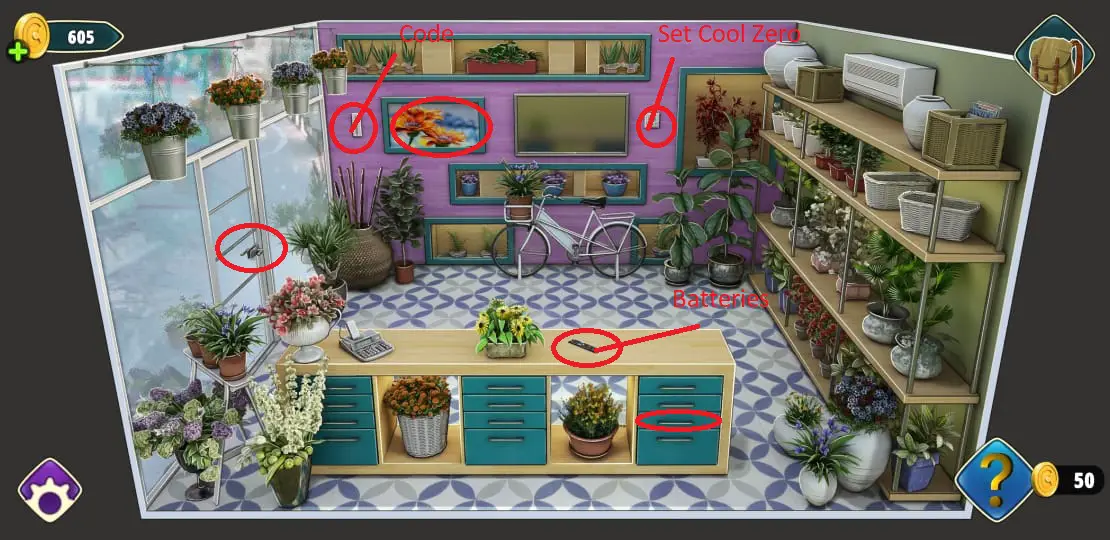Stepping into a pet shop is a sensory overload. From the playful barks of puppies to the soft chirping of birds, the atmosphere is alive with furry, feathery, and scaly friends. But have you ever wondered about the hidden rooms and exits behind the scenes? As a pet enthusiast, I’ve always been curious about the spaces where animals are cared for, supplies are stored, and the magic of the pet shop comes together. Today, we’re going to delve into the secret world of rooms and exits, uncovering the behind-the-scenes operations that make your local pet shop thrive.

Image: walkthroughs.net
Imagine this: you walk into your favorite pet shop, greeted by the familiar smells of pet food and the cheerful sounds of happy animals. But behind those brightly lit aisles and enticing displays, an intricate network of rooms and exits exists, vital for the smooth operation of the entire store. This is what we’ll explore today – the hidden world that keeps your furry friends happy and healthy.
Beyond the Aisles: Unlocking the Secrets of Rooms and Exits
The average pet shop is more than just a retail space; it’s a bustling hub of animal care, logistical operations, and customer service. The rooms and exits play a crucial role in this complex ecosystem. While the public area offers a curated selection of pet supplies and a glimpse into the lives of the animals, the “backstage” area is a crucial hub of activity, ensuring the efficient management and well-being of all creatures in the shop.
Behind the Curtains: Unveiling the Essential Rooms
The “backstage” area typically includes rooms dedicated to animal care, storage, and staff functions. These rooms are often unseen by customers, yet they are vital to the shop’s operation:
- Animal Care Rooms: These are the sanctuaries where animals are housed, fed, and cleaned. They are designed to mimic the natural habitats of the creatures, providing ample space for exercise, enrichment, and socialization. The conditions are carefully monitored to ensure the animals’ health and well-being.
- Storage Rooms: These spaces hold the inventory of pet food, toys, accessories, and other supplies. Effective storage is crucial for maintaining product freshness, preventing damage, and ensuring efficient stock management.
- Staff Rooms: These are dedicated spaces for staff breaks, meetings, and administrative tasks. These allow for a structured, organized, and efficient workflow for the entire team.
- Cleaning Supply Rooms: These rooms hold the equipment and materials needed for maintaining a clean and hygienic environment for the animals and customers. Proper sanitation is paramount in a pet shop to prevent the spread of diseases.
The Hidden Pathways: Navigating the Exits
The exits in a pet shop are not just for emergency situations, but also essential for logistical operations. They provide safe and efficient pathways for receiving and delivering supplies, moving animals for care, and ensuring smooth customer traffic flow.
Some common exits include:
- Loading Docks: These areas are designated for receiving deliveries and shipping orders for pet supplies. They ensure efficient transport and storage of goods.
- Animal Care Access: These exits provide staff with direct access to animal care rooms for routine maintenance and emergencies, minimizing disruption to the main shop floor.
- Staff Entrances and Exits: These doors provide separate access points for staff, allowing them to move freely without disrupting customers or animals.

Image: www.appgamer.com
The Secret Life of a Pet Shop: Tips from the Inside
Working “behind the scenes” at a pet shop offers insights that customers may not immediately see. It’s a world of dedication, animal love, and meticulous care. Here are some tips from a pet shop insider:
1. Respect the Animals’ Space: When admiring the animals, maintain a safe distance and avoid approaching them directly. Observe their behaviors and look for signs of stress.
2. Avoid Disturbing the Animals: Noise and sudden movements can be unsettling for pets. Keep your voice calm and avoid making loud noises in their presence.
3. Treat Staff with Respect: Pet shop staff are passionate about animals and care about their well-being. Acknowledge their efforts and treat them with respect and kindness.
4. Don’t Forget the Behind-the-Scenes Workers: Remember that animal care and maintenance involve dedicated teams working tirelessly to keep the pets happy and the shop well-organized. A simple “thank you” goes a long way.
Frequently Asked Questions about Rooms and Exits in Pet Shops
What are the most important rooms in a pet shop?
The most crucial rooms are animal care rooms, storage rooms, and staff rooms. These ensure the welfare of the animals, efficient inventory management, and a smooth workflow for the team.
Why is it important to have separate exits for staff and customers?
This promotes safe and controlled traffic flow, reducing disruptions and potential conflicts between customers and employees.
What are some safety measures to consider for exit routes?
Pet shops should have clearly marked and accessible exit routes for both customers and staff in cases of emergencies. These paths should be free of obstructions and easily navigated.
Rooms And Exits Walkthrough Pet Shop
https://youtube.com/watch?v=Ux8DALe8JJA
Conclusion: Behind the Scenes at Your Local Pet Shop
The rooms and exits in a pet shop may be hidden, but they are crucial to ensuring the smooth operation and well-being of the animals and customers. We’ve explored the secret world of animal care rooms, storage spaces, and the strategic use of exits. Remember, respecting the animals’ space and appreciating the hard work of the pet shop staff contributes to a positive experience for all.
Are you curious about the inner workings of your favorite pet shop? Share your thoughts and questions in the comments below!






